|
||
 |
||
1@komisen π or daisen επ. A blind joint with pins slightly off center. See *okkake daisentsugi Η|επp, Komisengama π is gooseneck joint with pins or a mortise-and-tenon joint used on a penetrating tie beam *nuki Ρ. It is characterized by the addition of a pin or key inserted through the head of the tenon *hozo ΩΌ, into the top of the pillar for purpose of tightening and strengthening the joint.
2@hanasen @π (nose pin). A blocking draw pin used in vernacular houses *minka ―Ζ. For example, a suspended strut tsurizuka έ©, is joined to a purlin *keta . The end of the transverse beam *hari ΐ, in the roof framework is cut into a large tenon that extends through and beyond the outer surface of the pillar. In order to draw the nose of the beam tightly to the pillar and to prevent the pin from penetrating the post or from slipping, the pin hanasen is cut at an angle and is driven through a mortise cut in the extended tenon.
3@shachisen Τmπ, *shachi Τm or ιΝ are slightly tapered keys placed in haunched or right angle mortises formed by oblique positioning of matching right angle cuts in both the tenon and beam. When these parts are joined, the key's tapered ends are pounded into the resulting slots. The slots may be aligned, half or fully staggered. If two boards are held together by shachisen, only mortises are made obliquely, part on each board, to receive the pin. See *sao Ζ, *saoshachitsugi ΖΤmp, *isukatsugi ’·©p, *saobiki dokko ΖψΖΨ.
4@Another type of pin is the yokosen ‘π, a threshold-to-post pin. This is driven horizontally into a groove where the threshold and post meet. See *shikii ~.
5@hiyodorisen κJπ. A long cotter with a head, kashirasen ͺπ, that passes through the tail rafters *odaruki φΨ, where they meet at right angle on each side of the hip tail rafter sumiodaruki χφΨ. It protrudes beyond the rafter on the side opposite its entry. A small pin called a magosen ·π (randchild pin) is driven through the protruding part to prevent slippage and to tighten the pin. It is used in shrine and temple architecture.
@
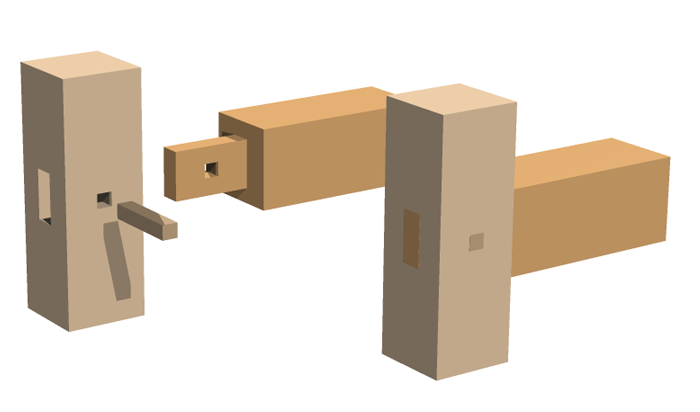
1) komisen π
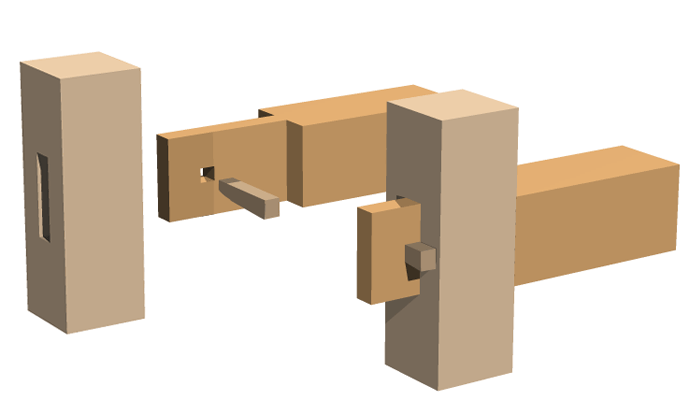
2) hanasen @π
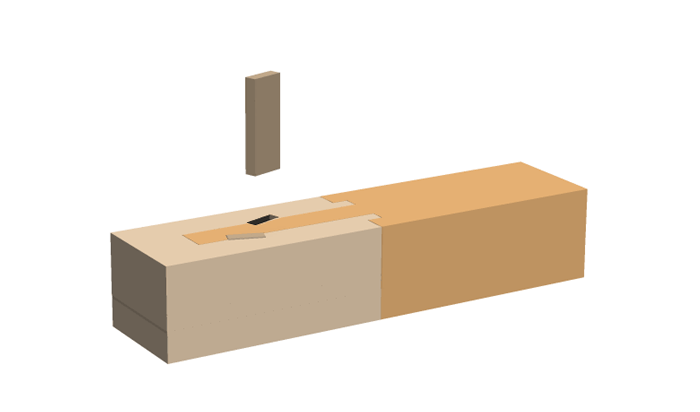
3) shachisen Τmπ
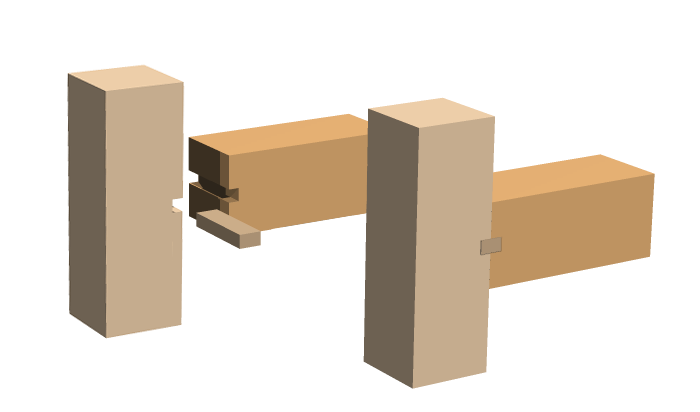
4) yokosen ‘π
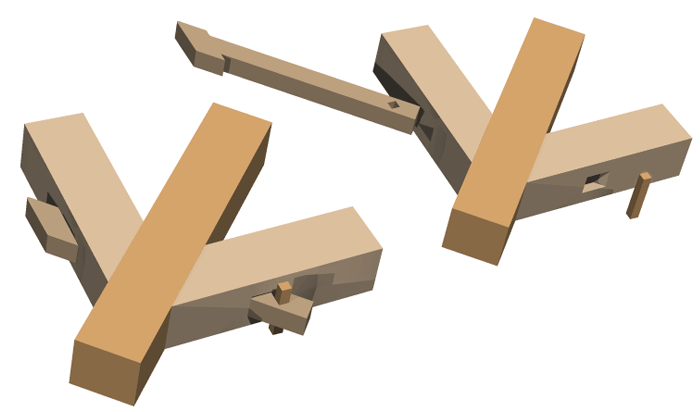
5) hiyodorisen κJπ
@
(C)2001 Japanese Architecture and Art Net Users System.@No reproduction or republication without written permission.
fΪΜeLXgEΚ^ECXgΘΗASΔΜRecΜ³f‘»E]ΪπΦΆά·B

